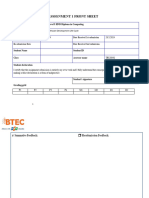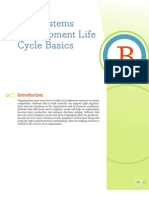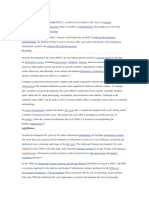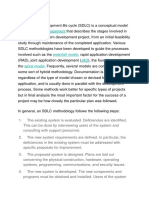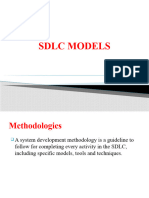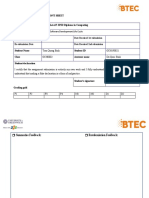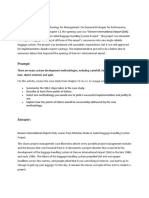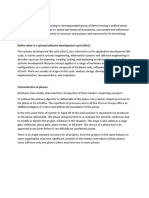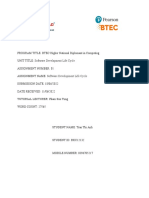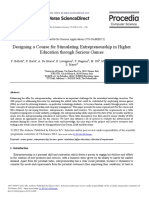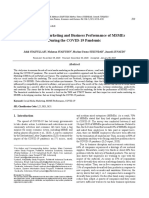0% found this document useful (0 votes)
27 views27 pagesAssignment 1
This document discusses different software development life cycle (SDLC) methodologies including Waterfall, Agile, Spiral, and V-shaped models. It also covers risk management processes and the purposes of feasibility studies, specifically economic, schedule, technical, and operational feasibility. Key aspects of an economic feasibility study and how technical solutions can be compared are described. The document uses a hospital management system as an example to explain selecting the Waterfall model and components of a feasibility report.
Uploaded by
Lin KMyatCopyright
© © All Rights Reserved
We take content rights seriously. If you suspect this is your content, claim it here.
Available Formats
Download as DOCX, PDF, TXT or read online on Scribd
0% found this document useful (0 votes)
27 views27 pagesAssignment 1
This document discusses different software development life cycle (SDLC) methodologies including Waterfall, Agile, Spiral, and V-shaped models. It also covers risk management processes and the purposes of feasibility studies, specifically economic, schedule, technical, and operational feasibility. Key aspects of an economic feasibility study and how technical solutions can be compared are described. The document uses a hospital management system as an example to explain selecting the Waterfall model and components of a feasibility report.
Uploaded by
Lin KMyatCopyright
© © All Rights Reserved
We take content rights seriously. If you suspect this is your content, claim it here.
Available Formats
Download as DOCX, PDF, TXT or read online on Scribd
/ 27


